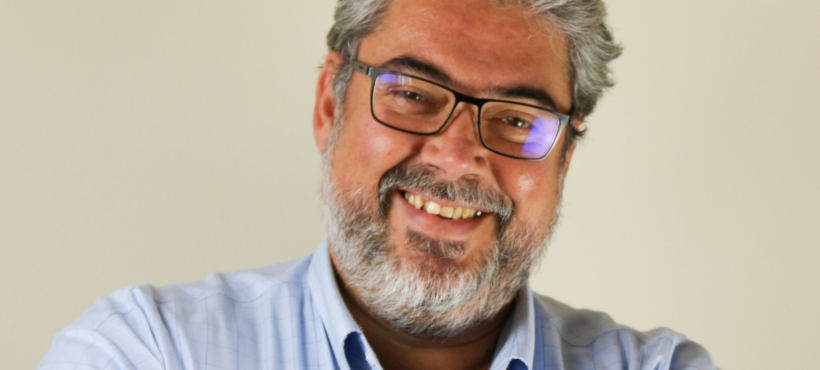In what is one of the hottest Summers on record, it reminds us that we are already feeling clearly the impact of climate change. But, it is a good opportunity to remember that this solar heat can be explored and put into a clear and positive use: renewable heating and cooling.
This is the proposal of this text, using a period that allows us to put some more time into some reflection and some potentially interesting Summer reading.
Record temperatures, floods and storms or wild fires, all this has happened in Europe over the last month, in multiple heat waves. This is a stark reminder to the impacts of climate change that we have been warned about time and time again.
But already before this Summer, the climate emergency topic had grown in relevance. Movements such as Fridays for Future have made a strong impact on public opinion and, as a result, at political level. The results in the last European elections have confirmed the trend for increased support for Green parties and for the climate change topic. The new President of the European Commission has also made the topic one of her priorities, emphasizing the need for a Green New Deal.
These are positive signs, but we need urgent action. Change has been too slow, due to the action of powerful lobbies and the inaction of irresponsible politicians. For instance, at a global level, subsidies for fossil fuels are not only existing, they are double of those for renewables. In Europe, EU Member States cannot agree on becoming Climate neutral by 2050.
We cannot afford this hypocrisy: we have already lost too much time!
The world woke up in 2006 to the Inconvenient Truth of climate change. In the meantime it got distracted with the financial crisis and then got anesthetized at the end of 2015 by the Reassuring Lie of Paris, that made people believe that the World Leaders had sorted out the climate crisis.
Well, over that decade of excitation and numbness, climate change continued, surpassing previous projections, with ever increasing levels of GHG in the atmosphere and extreme-weather events happening at an unprecedented rate.
So, finally we talk more recurrently about Climate Crisis or Climate Emergency. How do our politicians address this emergency? By talking about carbon neutrality in 2050 while setting a target of a mere 40% reduction of CO2 emissions or reaching only 32% of renewables by 2030. Placing this discussion far in the future will not help to address it has the emergency it is. Therefore, immediate solutions need to take precedence on solutions that shall deliver results in the longer term (likely beyond 2040). And such immediate solutions need to be put in practice by all, with citizens at the center.
There is no time!
We are living out of a carbon budget. The longer we take to considerably decrease GHG emissions, the steeper will have to be the reductions in the future and the harder it will be to keep our global temperature under manageable levels.

We need to put in place measures that give us immediate results. We also need to develop new solutions, be it power storage, hydrogen or CCUS (carbon capture, utilisation and storage). But we can’t wait for those solutions to prove themselves technically or economically viable, especially when we have a huge untapped potential at hand.
We need to act both on the supply and demand side!
The discussion is mostly focused on the power generation, mostly in relation to the supply side and the need for more electrification. This approach has several gaps that we can address below.
First of all, we need to take strong and decisive action on the demand side, on the way consumers use or produce energy. We need to increase energy efficiency and to switch from carbon-based energy (be it heat or power) to renewable solutions.
Obviously, for many politicians (too many), it is easier to focus on the supply side because it means delegating the responsibility of the energy transition to power utilities, oil companies or large corporations. Of course, this will have a cost and public funds will be needed. But it is an easier, more comfortable approach at political level and allows those in power to dodge the responsibility in the current electoral cycle. The risk for failure is nonetheless huge and the potential costs immeasurable.
The alternative approach would be much harder to implement and less popular at political level. But it is the right one to take: to change the demand side. This means that everyone needs to be engaged in the process, consumers need to take action, change their behaviour, improve the energy efficiency of their homes or businesses, acquire renewable energy systems for their homes, be it for power or heat generation. This approach has more political risks as it is potentially more unpopular to demand from voters to change and to invest. But it is the also the one that brings sustainable and resilient changes to the energy demand.
We have already solutions to act on the demand side and in large part it refers to reducing and decarbonising heating and cooling. Still, both approaches are needed, i.e., addressing supply and demand side in a combined way. As it must be a combined effort, engaging citizens and corporations and putting in place carrot and stick measures to push them to do it while supporting them in that transition.
Decarbonisation rather than electrification!
One common misconception on the energy transition debate is that electrification means decarbonisation. It is easy to understand why such a simplified argument gets so much traction on the broad political debate. It assumes that electricity generation will be decarbonised and therefore, if we electrify, we’ll decarbonise. Again, at the political level, this is a comfortable (even if wrong approach), as it allows political leaders to “dump” the responsibility into utilities.
The fact is that decarbonisation can be done in different ways, including obviously using decarbonised electricity. But it also entails many challenges, such as expanding power grids, dealing with power storage and grid balancing. And all this requires technical breakthroughs and enormous investments in infrastructure. And requires a discussion on who shall pay the hefty bill.
Of course, we need and are moving towards more electrification. And that electrification done on a sustainable way will help decarbonisation. But we can’t be tricked into the simplistic idea that electrification means decarbonisation or that electrification is the only way to decarbonisation.
No, they are not at all synonyms. They can though be complementary.
Utilities must increase the percentage of renewable power in the grid as fast as possible. This is quite different from the electrification path many propose. Increasing the proportion of renewable power means that the increase on renewable electricity supply needs to happen at a much faster pace than the increase in total electricity consumption. This is a simple concept that is often ‘forgotten’. In this simple equation, Supply from RES electricity / Total electricity supply, the increase in the numerator ‘Supply from RES Electricity’ must be substantially and continuously higher than the increase in the denominator.
Though, according to IEA, this simple equation had a different result in 2018, with the total electricity generation from RES increasing by 450 TWh while electricity demand increased by over 1 000 TWh.
Be big on the big things!
“Europe needs to be big on the big things” was a famous slogan from the Juncker Presidency of the European Commission following the Rome Declaration
Heating and cooling, represents almost 50% of the energy consumption in Europe though this is largely overlooked by politicians and consumers.
We can all easily assess the lack of awareness on this topic. Ask your friends how much they spend in electricity and how much they spend in heating or gas. They often do not realise how much more they spend in heat, even in Southern Europe. Eurostat data launched last month confirmed that 79% of the energy consumption in households was used for space (64%) and water heating (15%).
Even in my own country, Portugal, where even recently I’ve been told by officials that heating was an issue for Central and Northern European countries, heating and cooling demand represents 35% of the total needs, with power (electricity) representing only 30%.
We need to operate a change in mindsets. One of the fundamental concepts is that “Energy is much more than electricity. It is mostly heat”. Or that solar is not only for power generation (solar photovoltaics) but also for heating and cooling (solar thermal).
After realising that change needs to include heating and cooling, we need to explain that this change depends mainly on decentralised systems, as most of the heating (and cooling) supply is generated in loco, at the building level. There is room to increase the proportion of district heating in Europe from the current 15%, though still the major challenge is the decentralised supply.
Then we need to understand how that change can be done. There are several barriers for changing the heating system and a natural tendency to stick to the same solution as existed previously.
Planned replacement!
Heating systems are only replaced every 20 or so years. And this change is often an urgent one, as it is likely due to the system breaking down in autumn or winter. At that stage the user needs a fast and simple solution. The fastest fix is likely a similar system to the one existing before, most likely not carbon neutral.
The way to deal with this small window of opportunity is to promote planned replacement, helping consumers to get information, technical and economic support to change to renewable energy systems before the old one breaks down. This will allow them to consider alternatives, save in advance, prepare their homes (if needed be) or combine with other investments (house renovation).
Not having a planned replacement of heating systems will bring us to a vicious circle, installing GHG emitting systems and locking them in for the next 20 years.
2030 has a milestone!
Most of the heating systems installed after 2030 will be there in 2050. Therefore 2030 is the limit date to ensure that all new heating solutions installed are using renewable energy. This is a major transformation on the market and one decade is not a lot of time to operate such transformation.
The good news is that there are already different renewable heating and cooling solutions in the market, including solar thermal, that are reliable and very competitive in terms of lifecycle costs, even if the initial investment is higher.
We have the solutions, we need the actions. Let’s prepare for the worst and hope for the best. And that means not getting lost on hypothetical scenarios and act with the tools we have already at hand.
Think of this Summer and this record heat as a call for action. But enjoy it nonetheless!


Leave a Reply